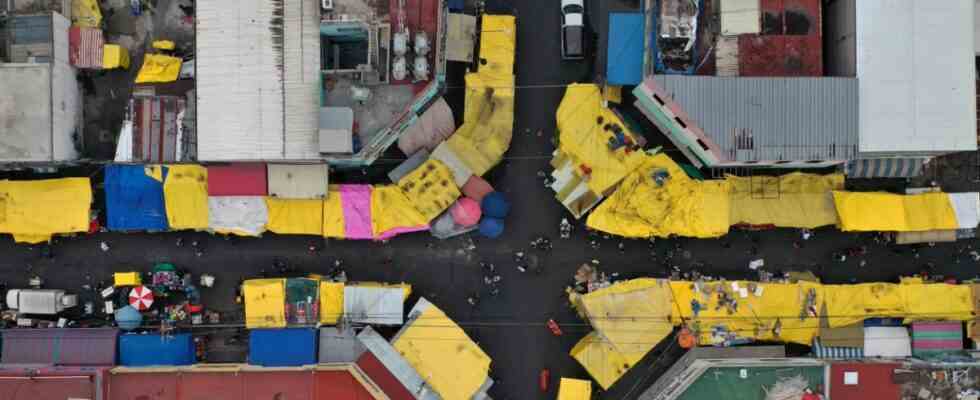If it’s true that you eat with your eyes, then the culinary delights in Cuauhtémoc have recently become much more bland. The district, named after the last Aztec ruler, is one of Mexico City’s 16 districts. Here you will find the old town, the presidential palace, excavation sites and also hipster districts such as Roma and Condesa. In short: there is a lot to see in Cuauhtémoc.
For a long time, the typical streetscape also included the traditional snack bars, brightly painted with lettering. “Great tacos!” “Rica’s tortas!” Among them: steaming pots, laughing pigs, fierce lucha libre wrestlers. You got hungry as soon as you walked by.
But that is over now. For a few weeks now, the local government has had the pictures painted over, uniform gray and white instead of cheerful colors on each of the almost 1,500 stalls in Cuauhtémoc.
The mayor wants to clean up
The idea for all of this came from Sandra Cuevas. The conservative mayor wants to clean up her district. Potholes are being filled and lights installed, the streets are to be unobstructed, neat and clean. The thoroughly chaotic food stalls are a nuisance, so the colorful pictures are systematically replaced by a simple logo: “Cuauhtémoc is your home”.
Sandra Cuevas says she is acting at the request of local residents. And anyway: What’s the value of a couple of colorful stalls? “These may be local customs, but certainly not artCuevas said. Many fans and creatives disagree. They say the painted stalls are an expression of folk art and their eradication is an assault on Mexico’s popular culture.
In fact, the signs and pictures have long filled exhibitions and art books, websites and Instagram accounts are dedicated to the design of the so-called rótulos. Politicians have no right to decide what is art and what is not, activists say. They have long since organized themselves, in their own networks and under the motto: #ConLosRotulosNO – keep your hands off the signs and pictures!
It also plays a role that Cuauhtémoc has been overwhelmed by a ruthless process of change for years: where artists’ apartments once stood, apartment blocks are now growing skywards, the neighborhood pubs are closing, cafe chains are coming instead, with soy milk latte macchiato, but without charm and flair .
The world is becoming more and more the same
Cities and their inhabitants suffer from this phenomenon elsewhere too. Berlin, Boston, Bangkok, Bogotá: The world is becoming more and more the same. Local residents are demonstrating, politicians are promising to act, and a few years ago artists even dreamed up a popular saint against gentrification in Mexico City – Santa Marí la Juaricua, with its own shrine and processions. All in vain: the excavators and bulldozers keep rolling. Now the colorful snack bars: a tragedy.
It would also be different. In Buenos Aires, for example, buses have traditionally been painted with sinuous script, tendrils and stylized flowers. Filet porteño is the name of this unique design style, but in the 1970s the city administration decided that all the flourishes were far too confusing and banned painting. Luckily, people have reoriented themselves today: Der filete porteño is now a World Heritage Site and the painted signs are popular souvenirs for tourists.

